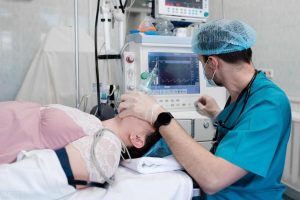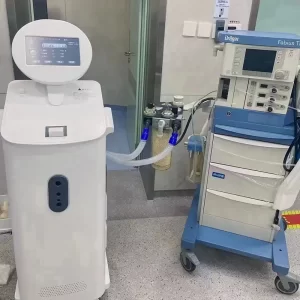In medical settings, anesthesia machines and ventilators play indispensable roles, catering to surgical anesthesia and providing respiratory support for patients. However, concerns may arise among patients and those vigilant about hygiene safety regarding potential cross-infection risks associated with the use of these two devices.

Functionality Distinctions Between Anesthesia Machine and Ventilator
Anesthesia Machine:
Primarily employed during surgery to administer anesthesia to patients.
Delivers anesthesia gases through the respiratory system, ensuring the patient remains in an anesthetized state during the surgical procedure.
Ventilator:
Utilized post-surgery or when diseases lead to respiratory failure, providing life-sustaining respiratory support for patients.
Ensures the patient's breathing function by adjusting airflow and oxygen concentration.
Potential Risks of Cross-Infection
While anesthesia machines and ventilators serve different functions, there exists a potential risk of cross-infection among patients in certain circumstances. This risk is influenced by factors such as:
Equipment Cleaning and Disinfection: Inadequate cleaning and disinfection before use may lead to the transmission of residual pathogens to the next user of the equipment.
Respiratory System Design: Differences in the design of anesthesia machines and ventilators may impact the difficulty of cleaning, with some details being more susceptible to harboring bacteria.
Preventive Measures
To mitigate the risk of cross-infection caused by anesthesia machines and ventilators, medical institutions can implement the following preventive measures:
Regular Cleaning and Disinfection: Adhere strictly to established cleaning and disinfection protocols, ensuring the hygiene safety of equipment surfaces and critical components.
Use of Disposable Materials: Where possible, opt for disposable respiratory equipment and related materials to reduce the frequency of equipment reuse.
Strict Isolation of Infected Patients: Isolate patients with contagious diseases to prevent the transmission of pathogens to other patients.
Anesthesia Breathing Circuit Disinfection Machines

Between the disinfection methods of manually disassembling the anesthesia machine or ventilator parts and sending them to the disinfection room, the anesthesia breathing circuit sterilizer can effectively disinfect the internal circuit of the anesthesia machine or ventilator, avoiding certain cumbersome processes and improving hygiene. Security provides new and more convenient options. The use of this advanced equipment can be operated under professional guidance, bringing more convenience to medical operations.